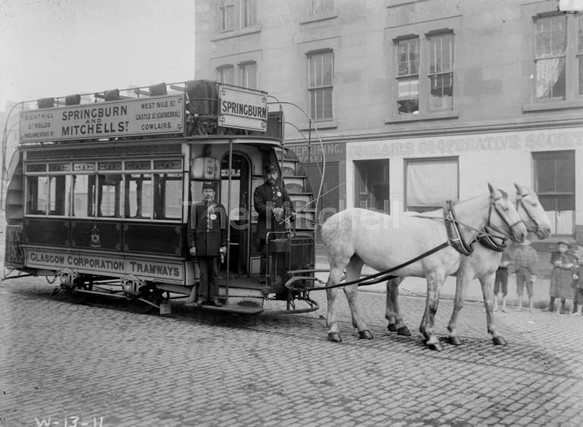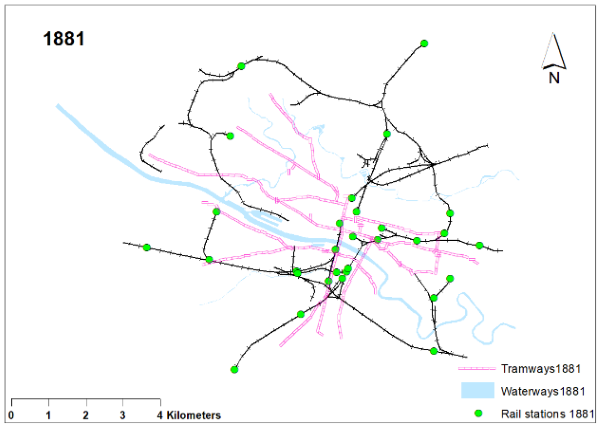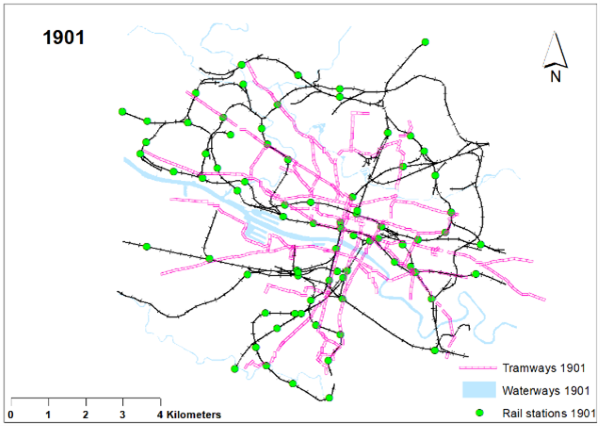Commercial expansion of Glasgow between 1861 and 1901 increased competition for business locations. New forms of infrastructure were built. Canals and rivers bringing raw materials such as coal and ironstone into the city were newly accompanied by a growing national and suburban railway network, lowering transportation costs.
Railways
Between 1861 and 1881, College Goods Station and Central Station were built in the heart of the Old Town and Central Business District (see Transport infrastructure maps). These major works displaced previous occupiers to new locations. This in itself was a spur to development opportunities, as for example with Glasgow University’s westwards move to its Gilmorehill campus.
The new stations were transformative in terms of access. The railway now crossed the River Clyde in two locations to reach the new stations. Passengers and goods coming from southern Scotland or England no longer had to be carted across Glasgow Bridge or ferried across the River Clyde to reach the Central Business District.
Locomotive works in Glasgow built engines for the new railways and exported them worldwide.
Waterways
The new railways gradually outcompeted the older and slower canals, but canal basins remained important entrepots for warehousing and distribution.
On the River Clyde, improvements to navigability enabled much larger ships and their cargoes to be brought directly into the city directly. Previously such ships had been forced to end their voyages at Port Glasgow, 30km away on the western coast, with consequent added transhipment costs.
There was massive expansion of Glasgow’s docks. Between 1861 and 1901 improved docks were built in Anderston, where steamship passengers arrived into the city. Huge new docks were also built in Whiteinch, and in Govan, where several shipbuilding yards of global renown were established.
Tramways

A horsedrawn tram on Keppochill Road, circa 1894 (image: Mitchell Library)
From 1872, construction of on-street tramways added a further dimension to Glasgow’s infrastructure. Unlike the railway, from the beginning, tramways were planned to cross the River Clyde, fostering better links between Glasgow Southside and city centre. New bridges, ferries and in the 1890s even a multi-carriageway tunnel were also built.
By reducing the time and effort for short journeys of a few kilometres, trams had the potential to facilitate greater separation of business and home life. Initially horse-drawn, trams and omnibuses also made Glasgow’s hillier elevations more comfortably accessible.



